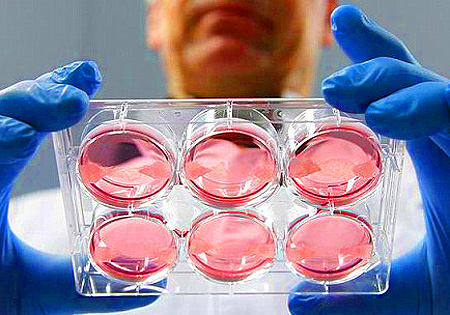A Hamburger from a Test Tube
The other day in London was sold the first ever hamburger grown in a test-tube.
It was made with laboratory-grown meat, not with meat from cattle in a pasture.
Its creators hope that the demand on protein can be satisfied without the necessity to keep large herds.
Frankenburger, whose production cost £ 250,000, was made with 3,000 strips of meat grown from cow stem cells.
This artificial meat is gray and greasy somewhat similar to meat of squids and scallops. It is the brainchild of Professor Mark Post, MD PhD. Maastricht University. His research was financed by an unknown businessman – he is likely to be the first one to taste this hamburger.
Animal stem cells have to pass four stages until they get to the hamburger.
First, stem cells are removed from a cow’s muscles.
Then they are incubated in nutrient broth until they grow in quantity many times over, emerging like a sticky tissue looking like an underboiled egg.
These empty muscles then get swollen up by a laboratory exercising – they are tied up to a resilient band that is then stretched out.
Finally, 3,000 strips of lab-grown meat are chopped up and made into a hamburger together with 200 pieces of lab-grown animal fat.
This process takes a long time and a great deal of money, but the researchers say that it can eventually take 6 weeks for hamburgers to grow from stem cells to the supermarket shelf.









